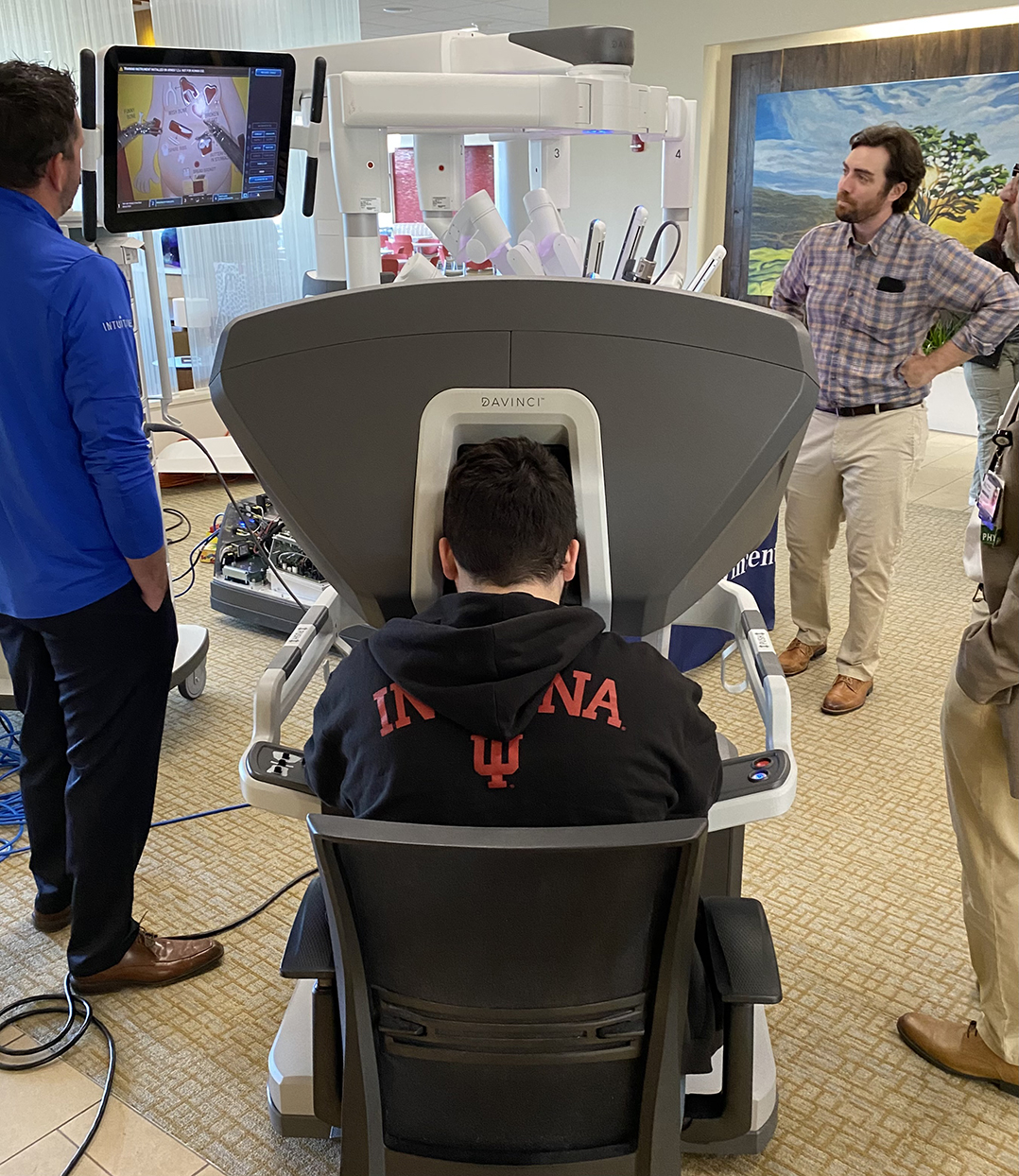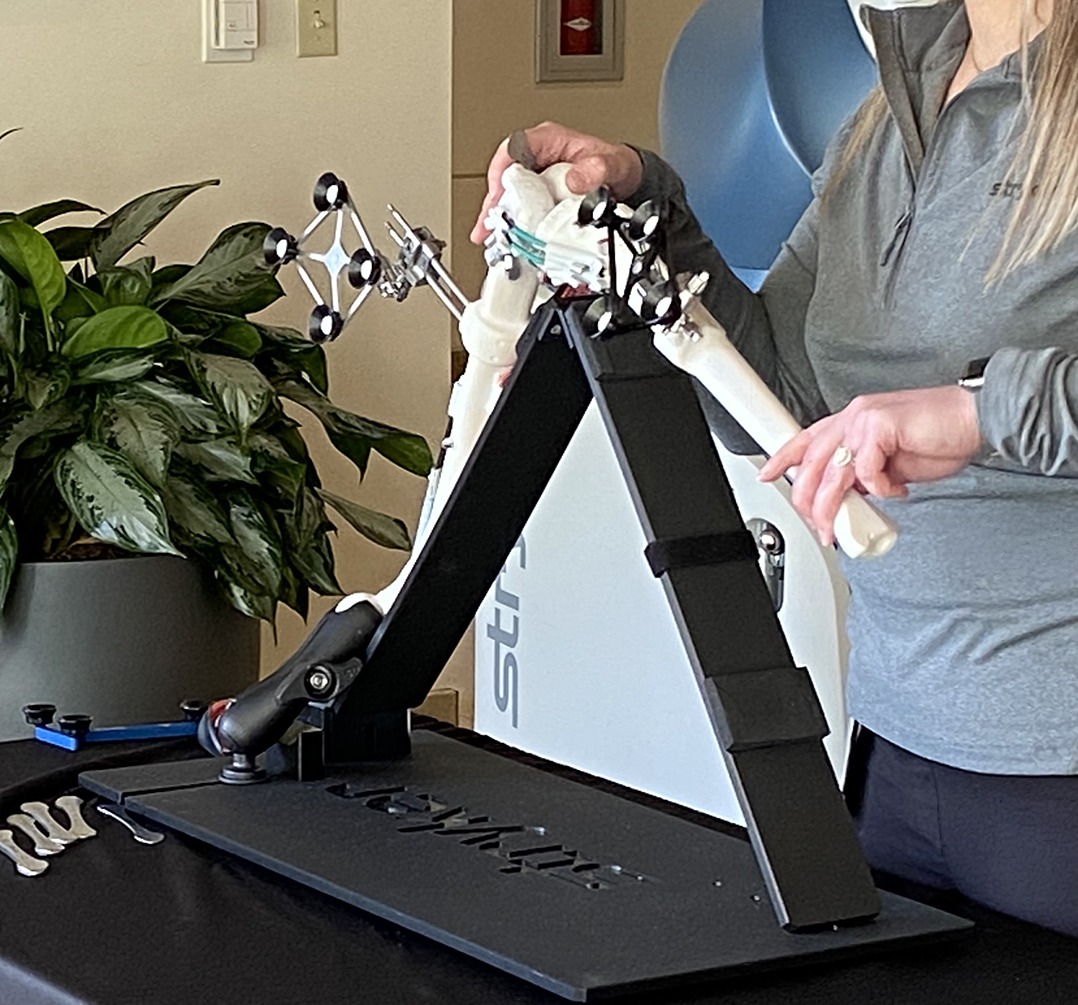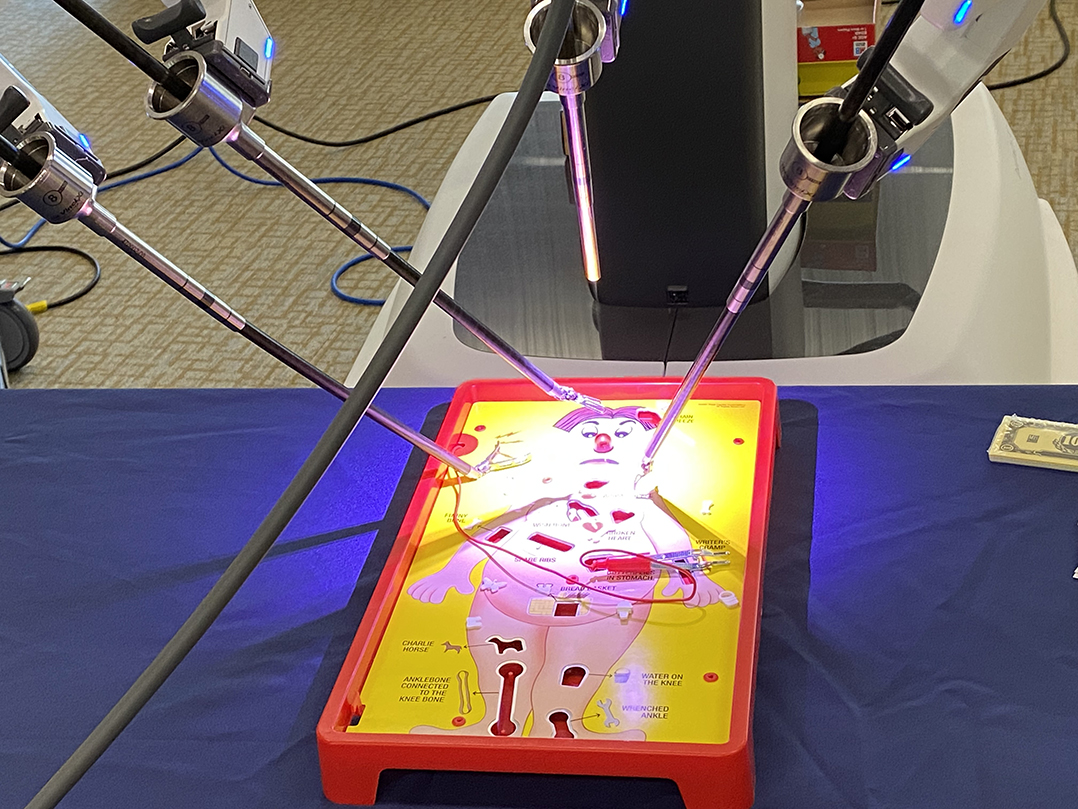For members of the general public trying out the da Vinci surgery robot at Ascension St. Vincent Fishers, it’s like playing a high-tech video game. However, for surgeons who use the equipment for their jobs, it’s a tool that allows more precision, fewer and smaller incisions and better patient outcomes.
The da Vinci and a Mako robot used for orthopedic procedures were both on display at Ascension St. Vincent Fishers, 13861 Olio Rd., during an April 25 open house. Anyone could take a turn “driving” the da Vinci, using hand and foot controls to manipulate the flexible robot arms to play a game of Operation — with the buzzer turned off.
Among them were Fishers High School Tiger Dynasty robotics team members Brandon Ogawa and Taj Gill.
Ogawa said there were some similarities between the da Vinci and driving robots made by the school team — mostly the need for precision.

“It was really cool,” he said, noting that it is something like a video game. “When you actually put your face up in there, you actually get some decent depth of field.”
Gill said the experience was “trippy.”
“It doesn’t feel like a (virtual reality) headset because it feels a lot more realistic,” he said. “The way the arms move, it almost feels natural in a way. And so, when you’re moving it, it doesn’t feel like you’re moving some robot. There’s no delay.”
Visitors were not able to manipulate the Mako robot themselves, but it, too, was in operation, showing how it helps to calculate and offer guidelines for a surgeon to precisely replace a knee joint.
Some of those surgeons were on hand for a slide-show presentation during the two-hour event. General surgeon Jennifer Zyromski said the da Vinci robot is a relatively new piece of technology at the hospital — it arrived in fall 2023 — and it’s been a big help in her work.
As a general surgeon, Zyromski said, she performs a lot of abdominal surgeries. Historically, that kind of surgery involved large incisions. Later, they were able to do more minimally invasive techniques using small incisions and manipulating tiny surgical tools attached to wands, with miniature cameras allowing surgeons to see what they’re doing.
But, she said, those wands are straight and don’t have much maneuverability. Also, the cameras have one lens. They show what’s happening in 2D and surgeons depend on team members to move the camera.
“The advantage of the robot, there’s actually two cameras — there’s a left eye and right eye, and it gives you 3D vision,” Zyromski said, adding that the robot’s arms are more maneuverable. “So, instead of just having a straight arm … you can move your wrist all around — the surgeon can control all the instruments in the robot. When I’m operating, I can control the camera and all three instruments, I can toggle between the instruments, I can position the camera exactly where I want it.”
Obstetric surgeon Valerie Gathers said she’s been practicing for 11 years, but learned to use a surgery robot when she was still a resident. She joked that she “drank the Kool Aid” early on, and became a firm believer in using robot technology.
Gathers said hysterectomies, for example, used to require large incisions and a significant loss of blood.
“The robotic hysterectomy came out in the early 2000s, which was able to really revolutionize how women do after surgery and as well as visualization for the surgeon,” she said. “We went from that huge incision like we would do with a C-section to, generally speaking, about four to five little, small incisions about the size of my pinky.”
Smaller incisions lead to better post-surgery recovery, Gathers said, including less chance of infections and less need for pain medication.
Orthopedic surgeon John Martin talked about the Mako robot, which he said calculates exactly where a surgeon needs to cut into bone for joint replacement procedures. That precise calculation leads to better post-surgery balance for patients.
“It allows us to individualize each knee replacement per person,” he said. “This allows us to lower how much pain meds and analgesia that people need after surgery, improves the outcomes (and) gets people home quicker.”
For more about Ascension St. Vincent Fishers, visit healthcare.ascension.org.

Health care innovation
The da Vinci robotic surgical system was developed by California-based Intuitive, which also has developed a special robot called Ion, used for minimally invasive lung biopsies.
According to the company website, more than 12 million procedures have been completed using the da Vinci surgical robot since 2022, and there are about 7,500 da Vinci systems in hospitals around the world.
Mako surgical robots are distributed by health care company Stryker, which bought the original Mako company in 2013. According to the Stryker website, its various products are used in about 75 countries worldwide, affecting about 150 million patients annually.




